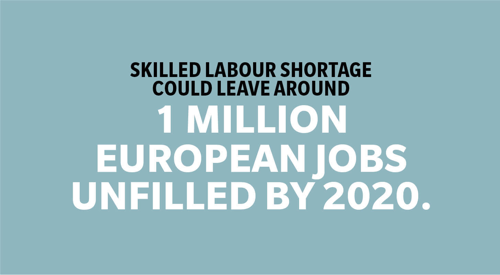Today’s challenges for HR departments
Many human resources departments are still managing and handling paper-based personnel files. However, the processes become even more time-consuming in the face of new data regulations. Thanks to its information management solution, Konica Minolta is helping businesses streamline their HR processes.
Today, HR teams face unprecedented challenges on multiple fronts:
- The administrative burden of labour and data legislation has never been greater, with the compliance requirements arising from regulations like the GDPR demanding a far greater level of operational discipline. But paper files and archives are far harder to keep audit-proof and compliant.
- Handling paper documents can be far more error-prone and, even when done effectively, keeping archives organised when locating information is incredibly time-consuming. Especially for companies with workforces and HR officers working across multiple locations and even multiple countries, the search for documents can prove highly labour-intensive. Aside from these labour and opportunity costs, the simple act of committing information to paper obviously generates high paper and printing costs from the outset.
- A shortage of skilled labour has forced businesses to view HR as being mission critical in an increasingly competitive pursuit of talent.

Digital Personnel File: Finding and managing talent, not paper-based personnel files
Many human resources departments are still managing and handling paper-based personnel files. However, the processes become even more time-consuming in the face of new data regulations. Thanks to its information management solution, Konica Minolta is helping businesses streamline their HR processes.
Konica Minolta is helping its customers streamline their HR processes
Despite increasing digitalisation of HR processes, many organisations still feel there is much more to be achieved. For example, in the HR Software Monitor report “These are the 4 biggest HR software trends by 2020”, many companies revealed that “the software used does not completely digitally cover the tasks associated with the personnel file” and that there would be “no continuous technical integration with other processes of the company”.
Whether an organisation has taken steps into digitalisation but is frustrated by the limitations of its existing personnel systems or is seeking to finally abandon a legacy of paper-based filing, Konica Minolta is a trusted partner that can facilitate the next steps towards a highly efficient, high-performing HR system.
“We want to help our customers achieve a better and easier overview with enhanced control over their personnel files.”
Benefits for HR departments using a digital personnel file management
Digitalising HR processes offers a broad spectrum of advantages that accelerate processes at multiple points within an organisation. Whether it is tackling the skills shortage, meeting compliance demands or improving the daily experience of the workforce, Konica Minolta’s digital HR solutions help to unburden HR departments so they can focus on business priorities such as competing for, retaining and developing talent.

Easy to use

Automation of the HR process

Fully compliance with privacy policies

Increasing efficiency and liberating resources

Saving physical space

Secure access

Saving costs
How to find and manage talent
Business has evolved, yet many human resources departments are still managing and handling paper-based personnel files. This legacy approach presents an increasing – and increasingly untenable – number of challenges to the HR function, as complex processes become even more time-consuming with the added challenge of handling physical files.

Our Digital Personnel File solutions
Success stories
Further reading





